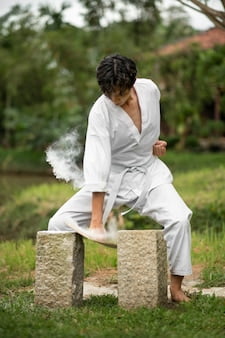The Amazing Benefits of Tai Chi: Can it Lower Blood Pressure?
Tai chi, an ancient Chinese martial art, has become increasingly popular in recent years due to its numerous health benefits. It is a gentle form of exercise that involves slow, flowing movements combined with deep breathing and relaxation techniques. It is said to improve balance, flexibility, and overall well-being. But, can it lower blood pressure? Let’s take a look at what the research says.
What is High Blood Pressure?
High blood pressure, also known as hypertension, is a condition in which the force of blood against the walls of the arteries is consistently too high. It can increase your risk of heart disease, stroke, and kidney damage. Blood pressure is measured in millimeters of mercury (mmHg) and is expressed as two numbers – systolic and diastolic. Systolic pressure is the top number, which measures the pressure in the arteries when the heart beats. Diastolic pressure is the bottom number, which measures the pressure in the arteries when the heart is at rest between beats.
The Link Between Tai Chi and Blood Pressure
Several studies have investigated the effects of tai chi on blood pressure. One study published in the Journal of Alternative and Complementary Medicine found that tai chi can significantly reduce both systolic and diastolic blood pressure in older adults. Another study published in the Journal of Human Hypertension found that tai chi can significantly lower blood pressure in adults with hypertension.
How Does Tai Chi Lower Blood Pressure?
It is thought that tai chi can lower blood pressure by reducing stress levels. Stress can cause the body to release hormones that raise blood pressure. Tai chi’s slow, gentle movements, deep breathing, and relaxation techniques can help reduce stress and promote relaxation. Additionally, tai chi can improve circulation, which can also help lower blood pressure.
Other Health Benefits of Tai Chi
In addition to potentially lowering blood pressure, tai chi has numerous other health benefits. It is said to improve balance, flexibility, and overall well-being. It can also improve muscle strength and reduce the risk of falls, particularly in older adults. Tai chi has been shown to improve mental health by reducing stress, anxiety, and depression.
How to Get Started with Tai Chi
If you’re interested in trying tai chi, there are several ways to get started. You can take a class at a local community center, gym, or martial arts studio. You can also find instructional videos online or purchase a tai chi DVD. It’s important to start slowly and work at your own pace, particularly if you have a health condition or are new to exercise. Always consult with your healthcare provider before starting any new exercise routine.
Tips for Practicing Tai Chi
When practicing tai chi, it’s important to remember to:
- Stay relaxed and breathe deeply.
- Focus on your movements and the sensations in your body.
- Keep a gentle, slow pace.
- Wear comfortable clothing and flat shoes.
- Practice in a quiet, peaceful environment.
The Bottom Line
Tai chi is a gentle, low-impact form of exercise that can have numerous health benefits. It may be particularly beneficial for individuals with high blood pressure, as it has been shown to lower both systolic and diastolic blood pressure. Additionally, tai chi can improve balance, flexibility, and overall well-being. If you’re interested in trying tai chi, consider taking a class or finding instructional videos online. Always consult with your healthcare provider before starting any new exercise routine.





